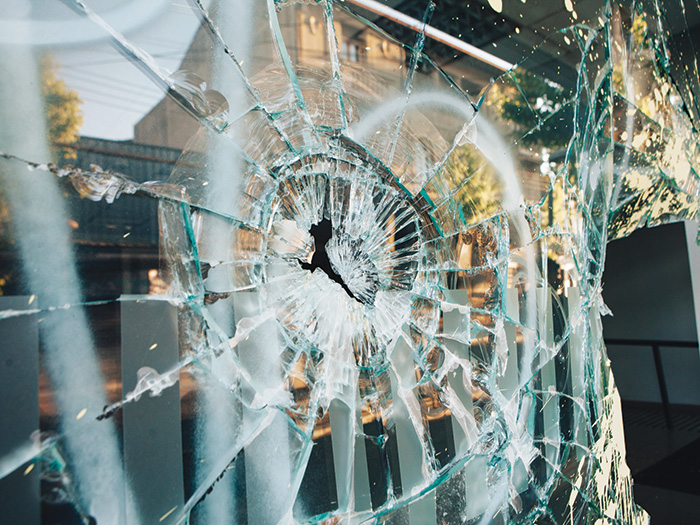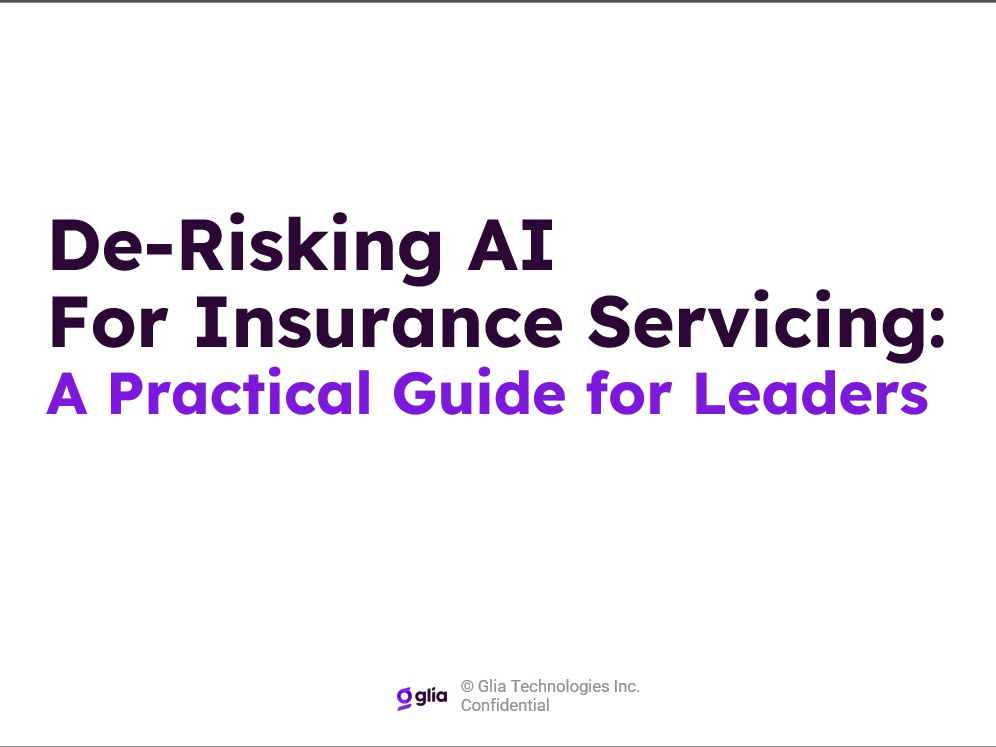If a Protest Turns Violent, How Will My Insurance Respond?

Josh Bullock couldn’t move.
Glued to a live surveillance video feed, he watched as someone smashed the glass door to his downtown Philadelphia restaurant, Farmer’s Keep. Soon, eight people were rummaging through the restaurant he had built over the past five years. They stole electronics, flipped tables and smashed the cash register. Someone even left with a few cases of steaks.
“It was such a feeling of helplessness to see that happen in real-time and not be able to do anything about it,” said Bullock, who couldn’t drive to the restaurant due to police-imposed travel restrictions. “It was complete and utter paralyzing helplessness.”
Bullock had beaten the odds in the cut-throat restaurant industry and was navigating post-COVID-19 life as best as he could — surviving on catering jobs amid trimmed-down business hours.
Then, the death of George Floyd in police custody sent protestors to the streets, leading to widespread property damage. Derek Chauvin, the officer who held Floyd down by the neck using his knee for nearly 8 minutes has been charged with second-degree murder, third-degree murder and second-degree manslaughter by Hennepin County Prosecutors.
After the break-in, Bullock boarded the windows and entryways, sanitized from top to bottom, and bought replacements for the damaged or stolen items. After six weeks and a $1,000 deductible, his restaurant was finally back to normal.
His experience is a microcosm of what’s playing out across the country. Protests after the deaths of George Floyd, Breonna Taylor and other Black Americans have business leaders prepping for the day civil unrest hits their doorsteps. They hope the protests are peaceful but should be ready if they become destructive.
In response, companies with property located in central business districts and urban shopping areas are closely monitoring protest routes to see if their businesses are potentially in harm’s way. They may need to board up windows and entryways with little notice. Others may be preemptively increasing security and loss prevention efforts. In the middle of it all, COVID-19 has left many buildings empty and idle for months, meaning they may not be fully covered for damages.
This paradigm is further hardening the property insurance market. Civil commotion and COVID-related claims are just the latest losses for an industry still reeling from a seemingly never-ending barrage of natural catastrophes.
With such uncertainty looming, businesses, insurers and brokers are working together to brace for whatever comes next.
Make a Security and Risk Mitigation Plan Now
Amid civil commotion, business leaders are being asked to toe a fine line. They need to harden their assets while remaining an inviting space for potential visitors. Retail shops need to attract foot traffic. Supermarkets need shoppers. Restaurants and bars (many currently offering only outdoor seating or to-go items) would lose big if they had to shut down yet again.

Brion Callori, senior vice president of engineering and research, FM Global
“It is very difficult to harden an asset to the point of stopping all potential civil unrest losses and still do business,” said Rick Miller, U.S. property practice leader at Aon, “but many common-sense measures can be employed to mitigate the risk.”
That’s why it’s crucial to make a plan. Businesses and employees must discuss emergency closing procedures, equipment shutdowns and business continuity plans well in advance. Also, make sure suppliers and partners know the plan, too, so they’re not potentially caught in dangerous situations.
It’s important to keep an eye on social media to learn about protest routes and see if the mood has turned from peaceful to contentious. Remember that a peaceful city could be one viral video away from erupting. Take Kenosha, Wisc., for example. A relative calm turned destructive after police shot Jacob Blake in the back in front of his children. People took to the streets, fires burned, and two protesters were fatally shot by an armed civilian.
Wherever a business leader falls on the political spectrum, they need to be ready to expedite risk mitigation efforts. Practicality is best. Have a contractor on call to board up windows and entryways. Lock valuables and fragile items away and out of view. Increase physical security and use cameras to watch from afar. Also, make sure backup power generators are fueled up and ready to go. If COVID-19 shutdowns have led to idle workplaces, make sure sprinkler systems and fire extinguishers have been recently inspected and are in working order.
“Get combustibles inside or offsite to an area that’s not exposed,” said Brion Callori, senior vice president of engineering and research at FM Global. “Worst case, make sure any combustible materials are moved far away from the building.”
Proactively connect with local law enforcement to understand the best and fastest ways to report damage or break-ins so authorities may respond as quickly as possible, said Gregg Cunningham, executive vice president at Liberty Mutual Insurance.
“Preemptive coordination with law enforcement helps disperse people causing damage as quickly as possible and helps businesses potentially lose less merchandise,” Cunningham said.
COVID Complexities Could Reduce Coverage
Pandemic shutdowns can also have a devastating effect on property insurance coverage. Vacant or idle facilities could be excluded from coverage or be severely limited. If an idle property sustains damage during civil unrest, the business owner might be left holding the bill.
“Buyers can’t just assume they’ll be covered,” Miller said. “Under many standard policies, a vacant or idle facility could be excluded or severely limited in terms of the amount of insurance provided. That is why it is critical that they understand the coverage they purchase and if there are any conditions to their policy which may change the coverage they think they have.”
Shane Holden, senior vice president at Worldwide Facilities, said some policies allow for back coverage to be added for specified time periods in cases of vandalism or sprinkler leakage.
“If an insured is approaching the definition of ‘vacant,’ speak with your broker or insurer immediately,” Holden said.

Shane Holden, senior vice president, Worldwide Facilities
Businesses also need to make sure they’ve got business interruption coverage in place, as physical damage to their property from civil commotion would yield coverage. Holden advises to pay close attention to civil authority and ingress/egress sublimits, as well as waiting periods. When it comes to renewals, Holden recommends commercial property brokers begin the process early and explore multiple market strategies.
“Innovative and creative renewal strategies are key, and insureds must be kept informed of the challenging market we currently face,” he said.
The Latest Property Insurance Peril
Long before the latest round of civil unrest, the property insurance market had been facing tough times.
A lethal combination of hurricanes, wildfires and large-scale thunderstorms left the industry reeling. Property losses from 2017 to 2019 totaled $180.9 billion — far higher than the $148.2 billion worth of damages in the seven years prior, according to Verisk Analytics. Some of the losses are non-modeled — meaning they are anomalies like the 2020 Derecho storm that unexpectedly ripped through the Midwest in August.
“Many insurers are not profitable with insured losses in 2020 and that continues to put pressure on rates and policy terms,” Miller said.
As of Q2 2020, property pricing in the U.S. increased for 11 consecutive quarters, and jumped 22% in the second quarter alone, according to Marsh. The current situation has led to some market dislocation, as insurers are increasing prices and lowering limits.
“For the most part, we have been able to buy as much limit as our clients have wanted to purchase,” Miller said. “Some clients are buying less limit based on cost but that is based on economics and budgets versus the ability to find limit.”
How can companies ensure they have the right coverage for civil unrest and other perils without paying a fortune in premiums? Work with engineers, brokers, and insurers to get a sense of the maximum foreseeable loss from civil unrest. Then use that assessment to form a risk mitigation plan and determine if they have the right coverage. And remember, some markets are even pushing to exclude such coverage.
“Some underwriters,” he said, “on businesses they determine to be more exposed to civil commotion, may push much higher deductibles or retentions to mitigate loss exposure which places additional risk or burden on insureds.” &










